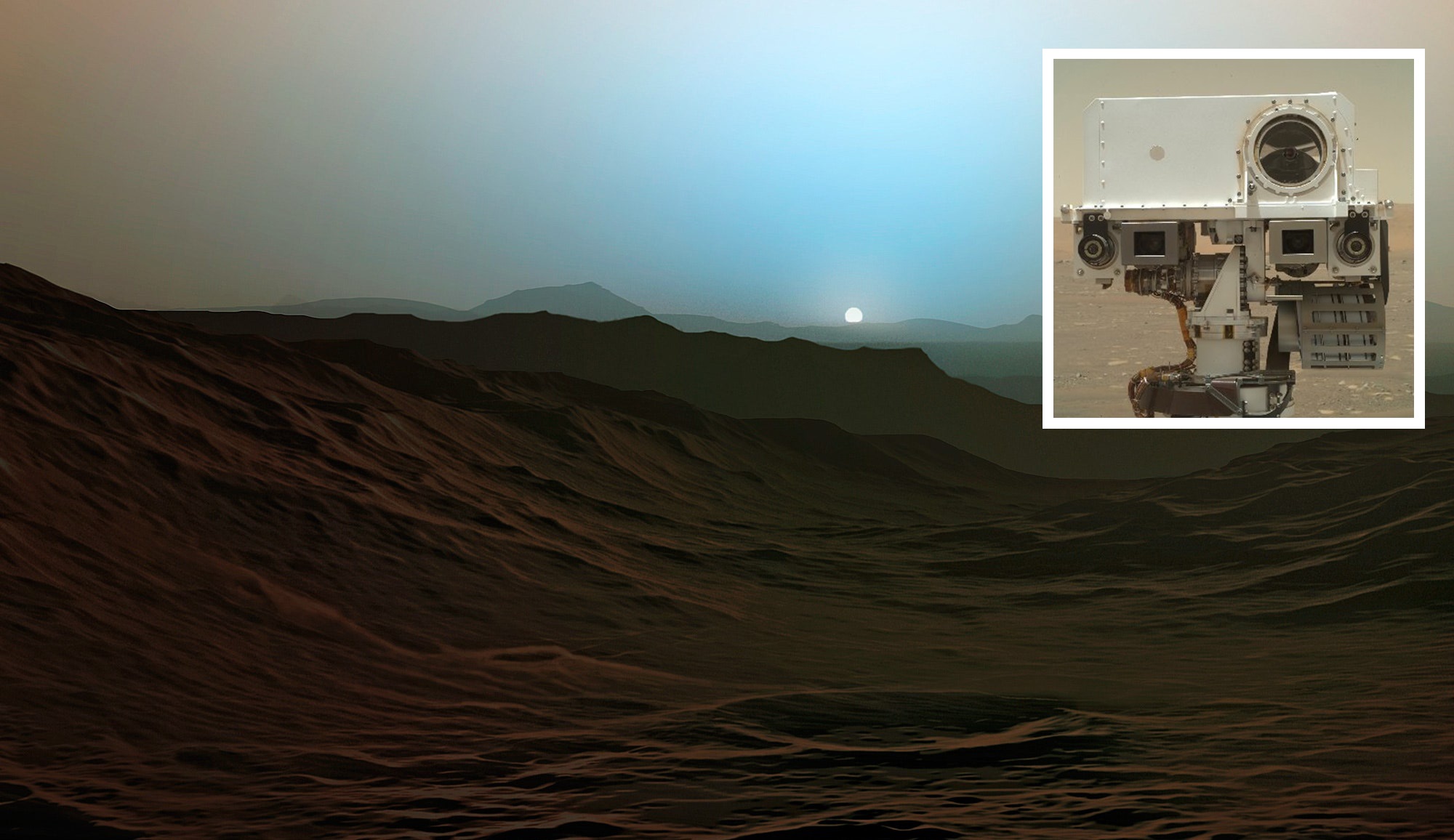Sunsets on Mars are generally distinguished by their characteristic blue colour, but this capture is duller than usual due to less dust in the atmosphere.
NASA’s diligent rover photographed a rare Mars sunset, according to the American Space Agency on Wednesday.
This is the first sunset captured by the camera system Mastcam-Z, which was meticulously installed on the mast and can zoom in, focus, and shoot high-speed 3D photographs and films. Allows for in-depth examination of distant items.
NASA’s Mars Exploration Program revealed further details about this dreamlike image from the red planet in its report, stating that it was obtained by Perseverance’s Mastcam-Z camera system on Nov. 9, 2021, the 257th Martian day, or sol, of the mission.
Scientists have known for a long time that the skies on Mars become blue at sunset because tiny particles in the atmosphere allow blue light to enter the atmosphere more readily than colours with longer wavelengths.
However, as you can see, this photograph is a little different since there was less dust in the atmosphere, resulting in a more subdued colour image than usual. According to the study, the colour has been calibrated and white-balanced to remove camera artifacts.

The Perseverance is now parked in the Sétah region of Jezero crater, where it is excavating an interesting location with stratified rocks. Earlier in the day, the rover successfully extracted a rock sample containing the greenish mineral olivine. Perseverance has discovered layered rocks, the type that forms in water, in the area she is now studying.
Scientists believe that this location may contain evidence of water on ancient Mars, as the 45-kilometer-wide Jezero crater was filled with water billions of years ago. Furthermore, scientists are depending on the rover to assess the planet’s geology and previous climate, as well as to pave the way for future missions.
Full image details & download: https://t.co/D1HZZhiRV8
— NASA's Perseverance Mars Rover (@NASAPersevere) November 19, 2021
Unusual sunset
The existence of a unique blue tint is one of the traits that generally stands out in the red sunsets of Mars. This is because “fine dust in the atmosphere permits blue light to enter the atmosphere more readily than colours with longer wavelengths,” according to NASA.
However, the colour can be seen in this new Perspective Rover image. It is taking longer than normal. Because the dust in the Martian atmosphere was low at the time. NASA said that the colour was calibrated and adjusted in white to reduce camera artefacts.
Previously, NASA Advertising His rover acquired a rock containing green ore, the third such boulder it has painstakingly gathered since its mission began in February of this year.
Astronomy, especially the quest for clues of ancient microbial life, is the principal purpose of dedicated work on Mars. The rover’s mission is to characterise the planet’s geography and pave the path for human exploration of Mars. The samples will be returned to Earth in 2030 as part of a cooperative NASA-European Space Agency mission.

